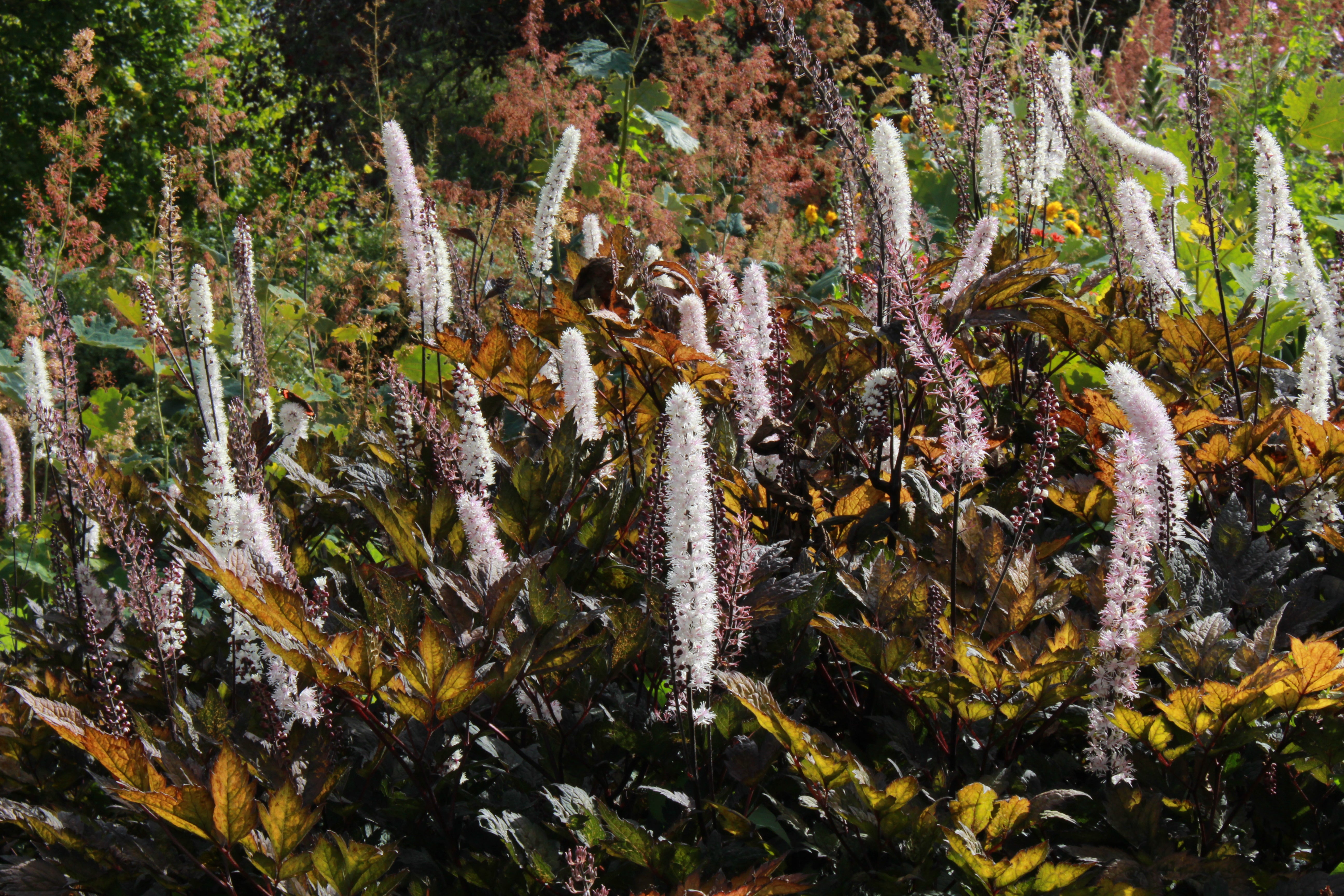Actaea simplex (Atropurpurea Group) 'Brunette'
Regular price
£10.99
Unit price
/
Unavailable
Approx. 0.5 litre pot
About this cultivar:
Actaea simplex (Atropurpurea Group) 'Brunette' is known for its upright, bronze-purple stems and foliage (sometimes tinted green when young). It has dense spikes of small, fragrant white flowers in early autumn, tinted purple in bud. A more subtle version of 'James Compton' - fully deserves its Royal Horticultural Society Award of Garden Merit. We love it in our garden!
- Position: Full sun, partial shade (better in partial shade)
- Soil: Almost any soil (that isn't too dry) - grows well in Ballyrobert!
-
Flowers: September, October
- Other features: Interesting Foliage or Fruit, Royal Horticultural Society Award of Garden Merit (RHS AGM)
- Hardiness: Fully hardy - grows well in Ballyrobert!
- Habit: Bushy, Columnar or Upright
- Foliage: Deciduous
- Height: 120 to 150 cm (4 - 5 ft)
- Spread: 45 to 75 cm (1.5 - 2.5 ft)
- Time to full growth: 2 to 5 years
- Plant type: Herbaceous Perennial
- Colour: White, pink, black
- Goes well with: Ferns (Dryopteris, Polystichum and Polypodium), Heucheras and glossier grasses such as Hackencloa. Rodgersia, Anemones, Fuchsias, Hydrangeas.
About this genus:
Actaea are herbaceous perennials, many of which were known as Circimifuga from 1732 (when John Bartram discovered the plant) until 2000 when DNA evidence discovered Circimifuga were also Actaea. Whatever you call them, Actaea have a majestic frame - tall and graceful - with dark straight stems. The leaves are often matt shades of the dark bronze-black-brown, but can also be glossy or green.Depending on the cultivar the fragrant flowers can be delicate white, cream or pale pink, and are tightly packed on dreamy spikes. This foliage, flower, and fragrance combination undoubtedly makes it a favorite in our garden at Ballyrobert and we think it should be in every garden.
You're often told Actaea prefer part shade or full shade and thrive in cooler, moist areas. However we grow one in an old bath in the middle of our yard! (I think by definition the climate in the British Isles is never full-sun). If too dry their leaves scorch, if too sunny the leaves bleach. Difficult to propagate since they don't like being disturbed and are quite slow growing. The simplex species tends to flower in later Autumn. The Atropurpurea Group typically have purple to bronze tinted foliage
In the garden Actaea tend to be used for their foliage and look great mixed with other foliage plants such as ferns (Dryopteris, Polystichum, and Polypodium), Heucheras, and glossier grasses such as Hakonechloa. Flower-wise Actaea also work well with Anemones, Fuchsias, and even some Hydrangeas.




